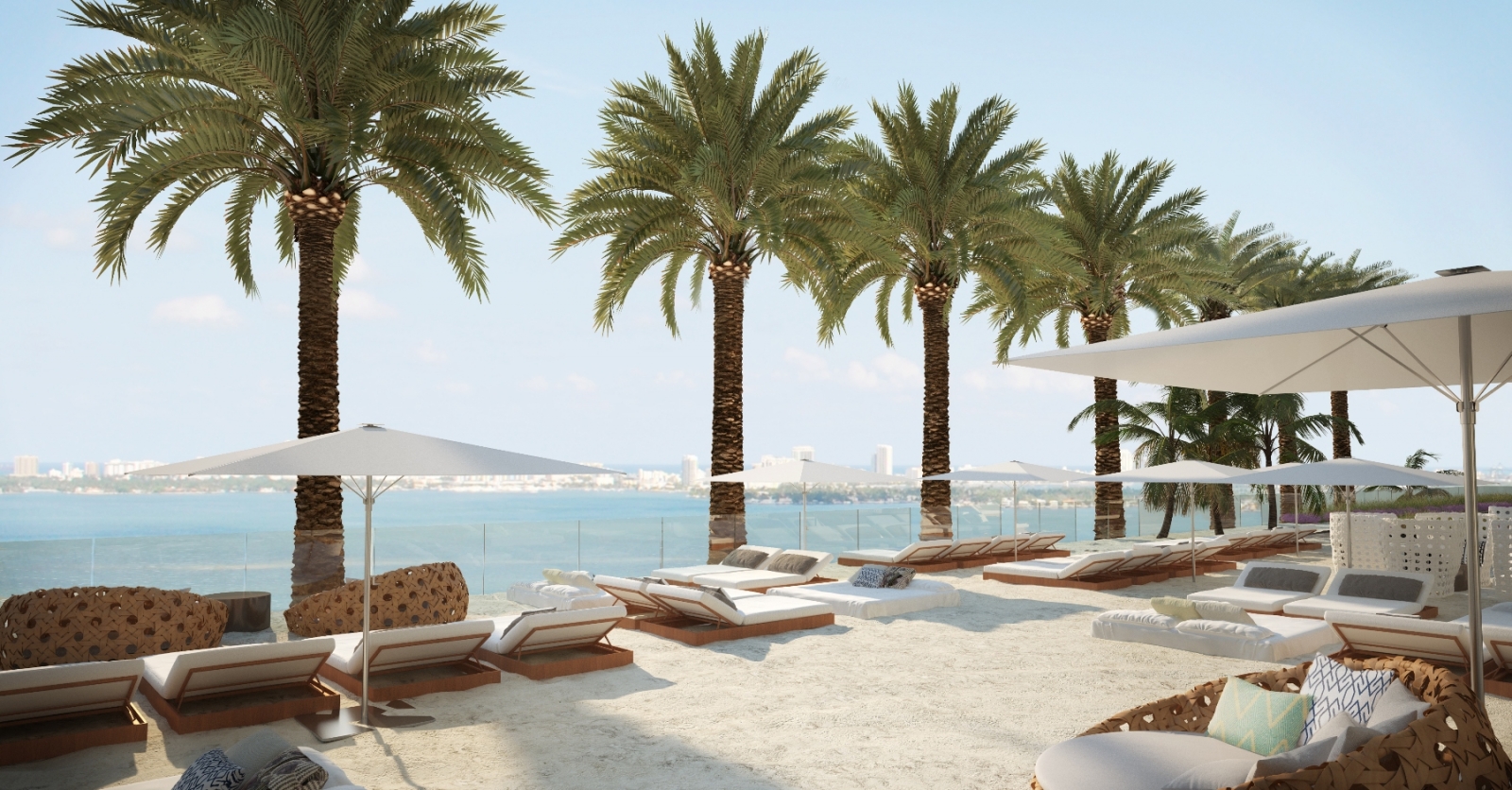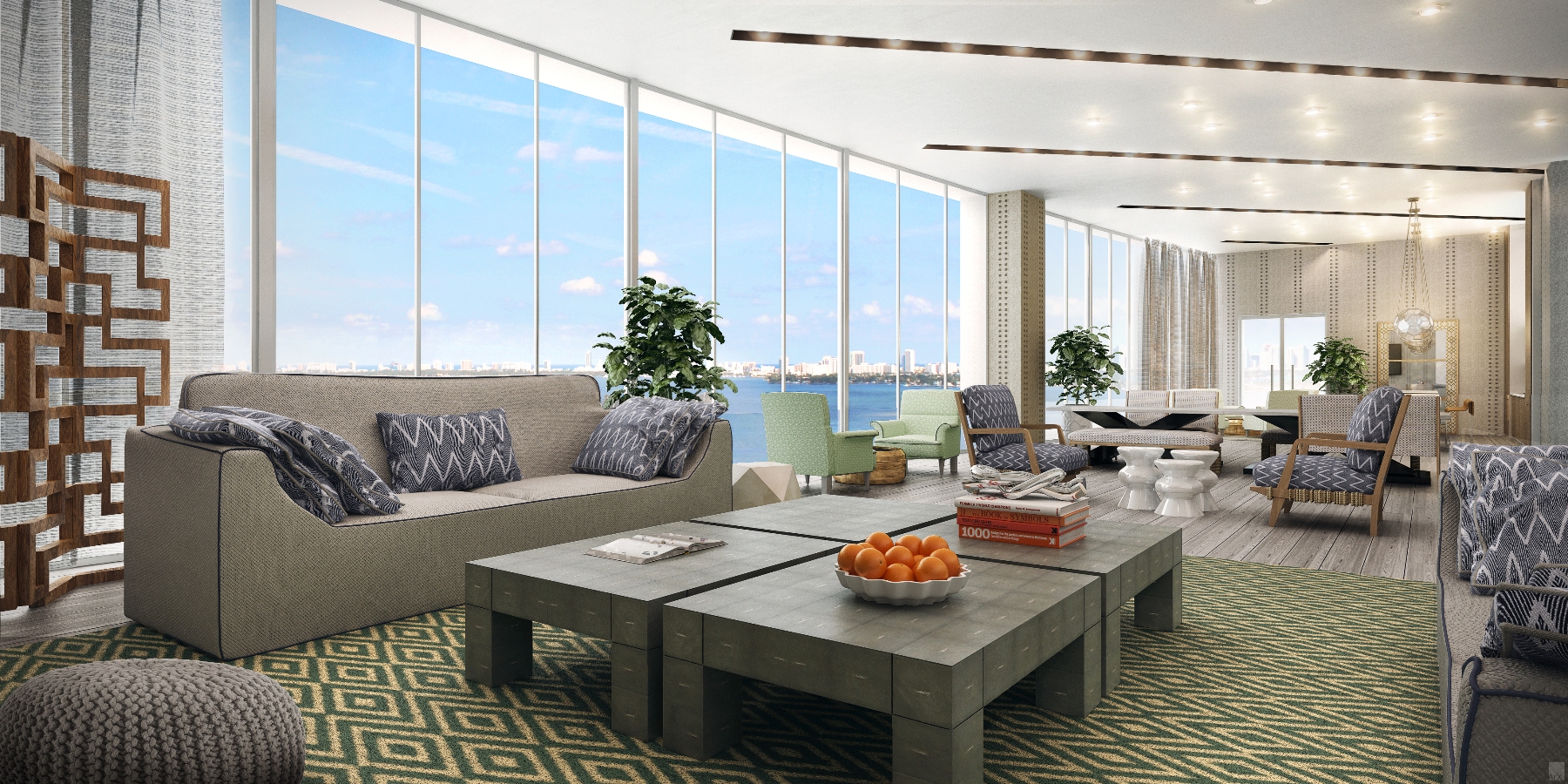.jpg)
.jpg)
Look out Downtown Miami, the beach just got closer! Biscayne Beach, celebrity interior designer Thom Filicia’s first luxury condominium project, has officially been completed in Miami’s fast-growing East Edgewater neighborhood. The 52-story residential tower is redefining how Miamians live and play by bringing the beach to the city, with resort-style amenities like the mainland’s first bayfront beach club overlooking the waters of Biscayne Bay. Biscayne Beach marks the Miami, Florida design debut for the former TV star – famously known for his role on Bravo’s award-winning show Queer Eye for the Straight Guy – as the brainchild behind the project’s sophisticated ‘beach chic’ interior and exterior living areas and amenity spaces. Filicia recently shared the process behind the design with Ocean Home.
Q: What is role as the designer for Biscayne Beach?
This is our first commercial project in Miami. I’ve done homes here — a house on La Gorce Island many years ago, a condo on Collins in the 50s on the
ocean. This is our biggest project so far and probably the most fun. I remember touring the site a few years ago now, when it was a two-story, motel-y thing. It’s been fun to conceptualize what we were going to do with the building, the lifestyle of it, its identity – and now, finally seeing it come to life!
My role includes everything from uniforms to materials to what restaurateur we’ll have, to logos and colors and branding. I’m the person who’s saying, ‘This is our vision, and we have to make sure that all of these pieces contribute to the vision.’ I couldn’t be happier to be part of this.
Q: Tell us more about the design concept…
We designed all the public, common areas like the reception, some beach areas, hallways, elevators, and on the fit and finish of the units like the doors, trim, kitchen cabinets, faucets and bathroom amenities. We may also offer furniture and interior packages to the people moving in.
The story we’ve created is sort of city-meets-beach. We wanted the building to feel connected to the water but have a different point of view on this side of the bay near the Design District and Wynwood. We wanted it to feel friendly and approachable, yet sophisticated and stylish enough to be in a city.
For our design, we selected materials that show a balance of urban and earthy. We use travertine as opposed to marble, because it’s more organic. We use honed stones as opposed to polished. We use shell stone, which is shells ground up into concrete, as pavers to bring in that beach element. To counter-balance the steel and glass, we’ve chosen a lot of woven elements – linens, walls with a grass-cloth kind of look, window treatments that are mesh, not shiny or silky.
Q: Why did you choose Miami as the location of your first-ever residential design project?
I think Miami has gone through a series of moments, dating from the 1920s. They hit and then they disappeared. Fifteen years ago, Miami was an adolescent, hip and young and fun, a party town. But now Miami is a beautiful woman in her 20s, more mature and interesting. I’ve been coming here since college and remember thinking that you could visit five or six times and be exhausted by it, or outgrow it, but now you can come at every stage and there’s something for you and it’s a place that you can call home. Miami has transcended South Beach, and emerging neighborhoods like East Edgewater are the foundation for what will make the city iconic.


Q: Tell us how Miami’s global appeal influenced your vision for the style of Biscayne Beach.
Miami has committed itself to a multitude of influences. And over the years, Miami has evolved and matured so that the food and culture and theater and museums and arts from people living and traveling here from so many different parts of the world have provided the layers that make this a true global city. I’ve been to Barcelona, Panama, Brazil. I would say that travel is an amazing opportunity, but even more so connecting with the culture and the people.
Even though Miami is becoming one of the most important American cities, people when they’re here still want to feel like they’re on vacation. Nobody really wants to feel like that in L.A. or New York City. There’s an element of Miami connected to the idea of surrendering yourself to relaxing. It’s something playful and authentic. Some of the most interesting places in Miami for me have that sense of ease, an organic element connected to the water and the idea that flip-flops are not off-limits.
For the design of Biscayne Beach, I was inspired by the sand, the sea and most of all – the city. The concept is based around finding a perfect balance between a resort-style beach setting and the vibrant neighborhoods surrounding East Edgewater. By mixing natural elements with raw and refined materials, we created common areas that are bold and sophisticated, yet inviting and approachable. You can feel comfortable in a sarong and sandals or dressed for a New Year’s party.
Q: What makes Biscayne Beach unique among the dozens of other luxury condos on the market?
Biscayne Beach is innovative in its layout, architecture and approach to waterfront living. I love that it’s sandwiched between Biscayne Bay and the Design District, so it’s centrally located from an urban standpoint – but we designed it to have a man-made beach so that you don’t lose a very important aspect of living in South Florida. It’s the first residential property to be designed on the city side of Miami to have a private Beach Club, and I think residents will appreciate that.
And I love that it’s on the bay because there’s such a movement toward using the water in a different way than it’s been used before, with water sports and activities. It’s different from the beach lifestyle of catching some rays, jumping in the water – and then you start drinking. People want to do something healthy and active. I’m a boater. I love kayaking and paddle boarding. I’m one of those people who want a bay lifestyle. Luxury has a different meaning than it used to – not just pampering and comfort, but access.
Q: Where else are you working now?
We’re doing projects in Montana, Colorado, Connecticut, the Hamptons, New York City, Turks and Caicos, and in Mexico. And we’re in talks for another commercial building near Miami but closer to Palm Beach.
Image Credits: Photo credit: Two Roads Development.


